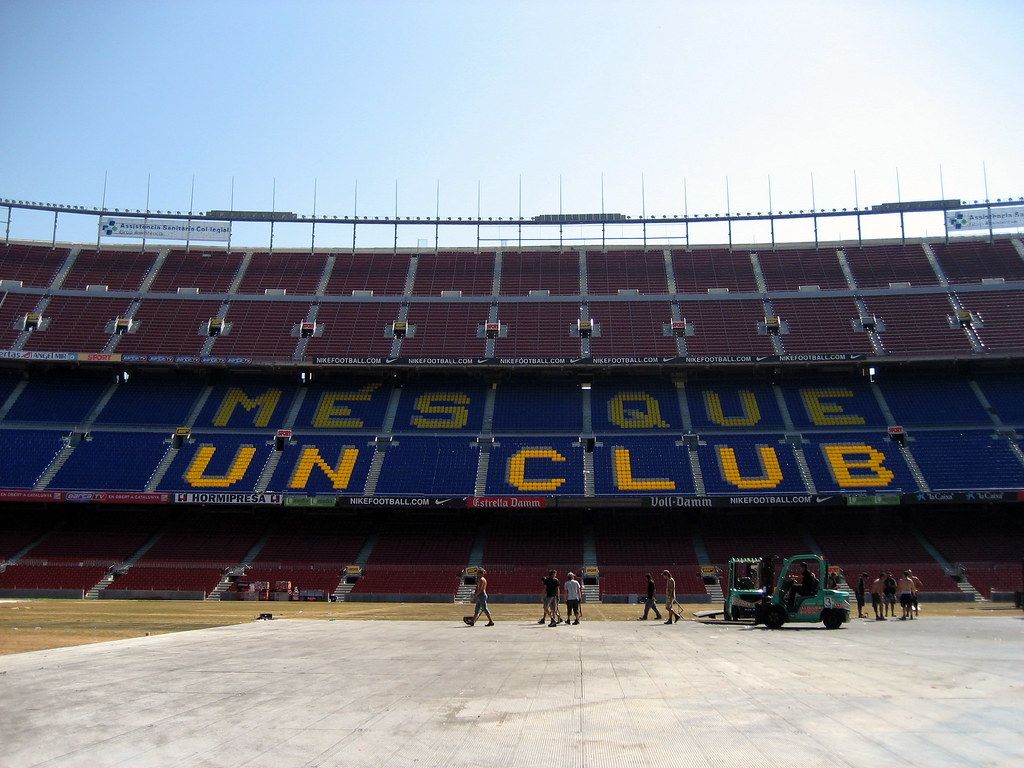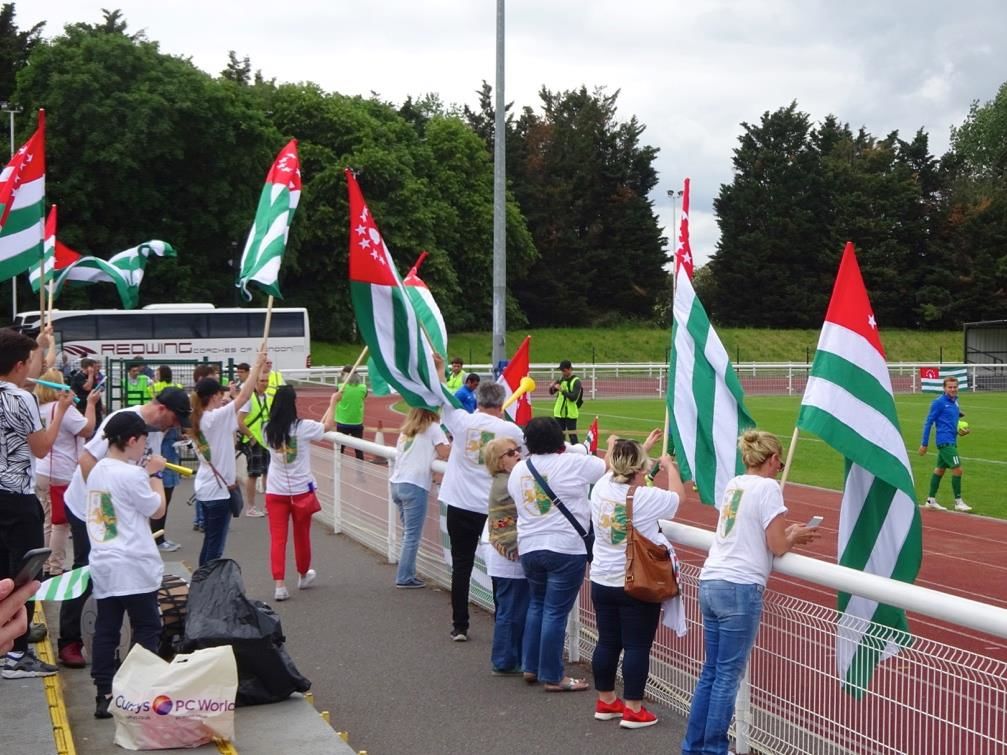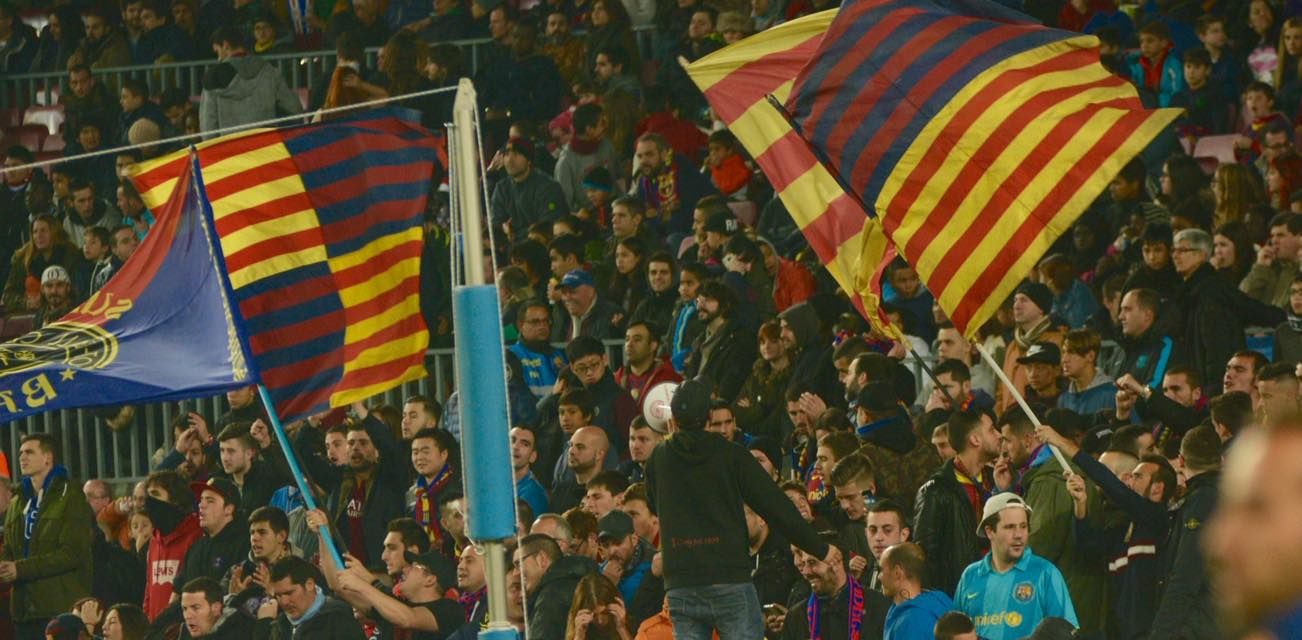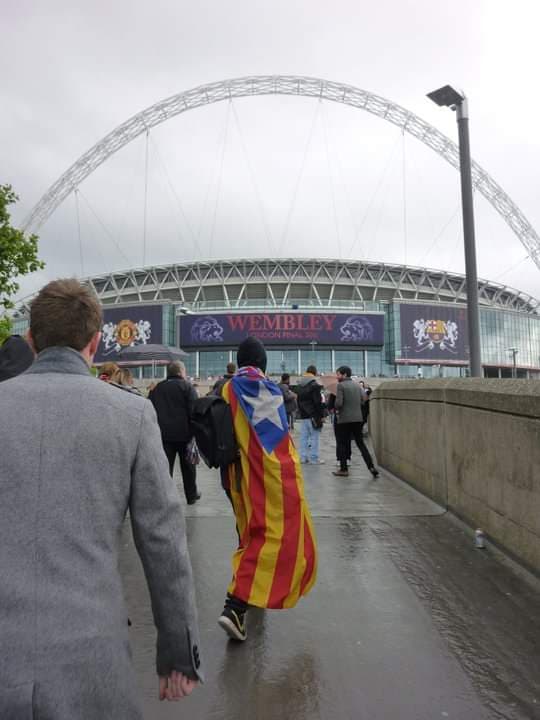Between Two Worlds
National Identity and Representation

Go to the Nou Camp, home of FC Barcelona, and you will see the phrase ‘Mes Que Un Club’ – Catalan for ‘more than a club’.
For years now sport has been far more than just that. It can be a way to unite or divide. Challenge norms and accept them.
This series of articles will be looking at these links. Whether it be fan culture and political fangroups, diversity or identity, sport can unite and divide like very little else.
In Power Play, a new 5-part series, Jason Button investigates the cultural and social power of sport, exploring how it can define who we are, our relationship with others, and our place in the world.
It’s the fifth of June 2016 and, on a recently laid pitch, stand 22 football players in the biggest game of most of their careers. 4,000 passionate fans are crammed into the Dinamo Stadium in Abkhazia, Georgia for a World Cup Final.
But these players represent more than a recognised nation. They speak for those without a voice. Those without a sense of belonging. This is the CONIFA World Cup.
“It was a really poor nation” said Amar Purewal, who played against Abkhazia, the host nation, for Panjab FA in the final.
“When it was announced on the tannoy after the game that the next day was a national holiday for the whole country there were people on the pitch, people crying. Generals in the police were crying and on the pitch too.
“That definitely unified their country in my opinion.”

Abkhazia fans at the 2018 CONIFA World Cup. Going into the tournament as reigning champions, they were unable to qualify from their group. Image - Lennox Beattie
Abkhazia fans at the 2018 CONIFA World Cup. Going into the tournament as reigning champions, they were unable to qualify from their group. Image - Lennox Beattie
Panjab and Abkhazia are two members of CONIFA, which are looking to allow players across the world to represent nations and groups who are not usually able to be represented on the international stage.
CONIFA, the Confederation of Independent Football Associations, is for football associations away from FIFA and these can include de-facto nations, regions and people of minorities to speak for those who don’t identify with any of the 211 national associations affiliated with FIFA.
“I’d describe [the teams] as the misfits of the soccer world” explains Sophie Royale, CONIFA’s media manager. “They’re the people who don’t really get taken seriously by FIFA, they’re the people who aren’t usually recognised or known.
“We have a range of different issues. Some countries have no conflicts at all. We have the Oceanic, Australasian teams and they are just islands that aren’t recognised by FIFA but then we do have ones like Abkhazia who are really struggling to get international recognition. It’s a very wide-ranging spectrum.”
Despite the positive points, for teams based in disputed territories and unrecognised regions, issues can come up, as Purewal explains. "The only thing I have myself is obviously Punjab and Panjab. When I went and played for the Punjab I turned up and thought ‘why is it Panjab?’ but a few Muslims play for the team.
“Punjab is between Pakistan and India and I was thinking to myself ‘well, I’m mixing with Pakistani lads. Obviously I’m a true Indian. A true Sikh. So what’s going on here?’ but you’re all from the same region so that’s all you can really do.”
But things can become more serious, and they did towards the end of 2018 when Karpatalya were put under pressure by the Ukrainian Government.
The team represent the Hungarian minority group within the western Ukrainian Province of Zakarpattia Oblast. Within the area, 12.1% of the population are Hungarian – the fifth largest national minority in the nation and according to the most recent Ukrainian census, there are around 122,000 ethnic Hungarians in the area.
Following their 2018 CONIFA World Cup win, the Ukrainian Sports Minister Igor Zhdanov called for the players to be interrogated for sporting separatism and banned from football for life. Players with Hungarian citizenship were also told they were unable to enter Ukraine.
“There have always been issues when these teams have had these conflicts and these identity crisis do play” explains Royale. “This has been the first time that it really escalated into arrests.”
Issues within Eastern Europe are not limited to football however. Jay Coakley, a sociologist at the University of Colorado Springs, has described tensions following wars between former Yugoslavic nations.
“There have been team handball games between Croatia and Serbia in recent years where nationalism related to the wars between the republics of the former Yugoslavia became so heated that it fuelled reactionary national policies and actions among citizens of Croatia” he said.
In a more civilised 21st century, issues regarding national identity can still be found as the political right rise, but how will that effect the sporting scene?
“Many people connect national identity with patriotism; fewer link it with nationalism, although Trump has supported this among some people. However, I don’t see this carrying over to national sport teams of the US” says the professor.
“During the cold war, there were right wing nationalists who made threats against the teams of the Soviet Union and became fanatical about beating the USSR teams. But I’m not sure if the same thing would occur today given that those same right wingers have become fans of Putin and Russia” he added.
Further problems can arise through separatist movements and it is where we began that this is seen more than anywhere. Catalonia – home of FC Barcelona.

Credit - Paul Jarvis
Credit - Paul Jarvis
Barcelona and Catalonia’s issues became prominent with Francisco Franco, who ruled Spain between 1936 and 1975. “Catalan culture has been suppressed by the Spanish government at different points in time, most notably under Franco” explained Luis Mazariegos, who covered Barcelona regularly during his time as a journalist.
“Regional and foreign languages such as Catalan were banned during his rule” he said. “For example, Football Club Barcelona was renamed Club de Fútbol Barcelona, and the Catalan flag was removed from the crest. In that time, joining Barcelona was a way of maintaining Catalan culture in a covert way.”
The club has also been a spokesperson for those without a voice in the fight for a referendum in recent years explains Mazariegos: “The club has supported the referendums, saying the Catalan people should have the right of self-determination. But they have not gone so far as to say which way is best to vote on the referendum.”

A FC Barcelona with a Catalan flag draped around him arrives for the 2011 Champions League Final. Photo - Tina Button
A FC Barcelona with a Catalan flag draped around him arrives for the 2011 Champions League Final. Photo - Tina Button
It may not only be Barcelona, but they are one of the true embodiments of what it means to identify as an output for those without anyone to represent them.
Panjab, Karpatalya, FC Barcelona. They are social movements. Anyone involved can say they are part of a movement.
Only one has it across their stands in their stadium, but they are all more than a club. Mes Que Un Club is more than just a phrase. It’s a social statement.
In the next part of the series, we will be zooming further into society as we look at the impact sport can have on the identity of towns, cities and smaller groups.

